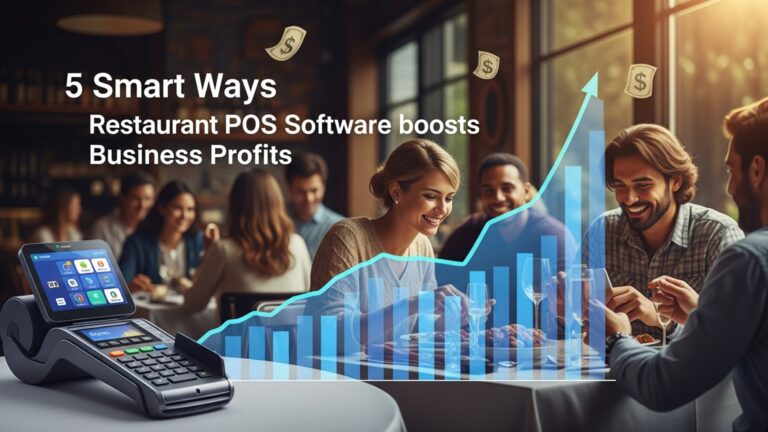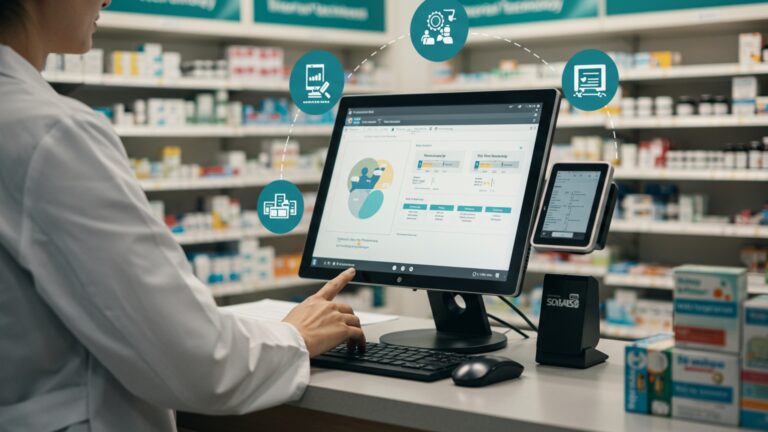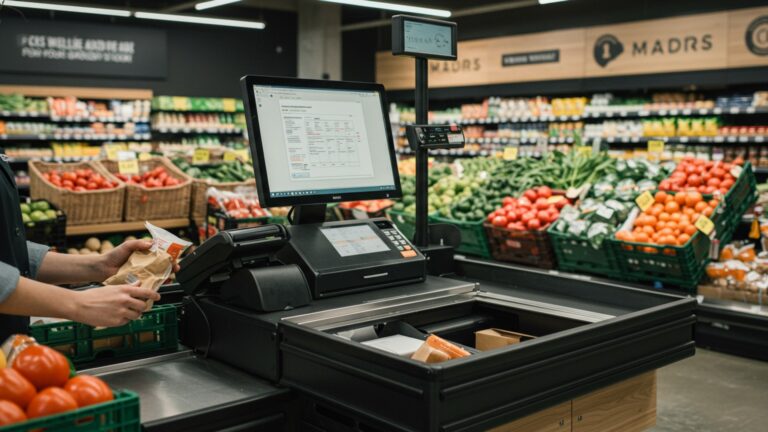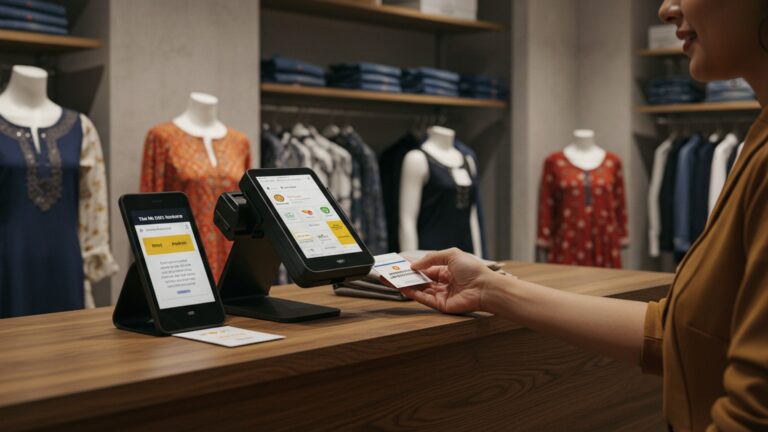10 Essential Features for Apparel Store Billing Software Success
In today’s dynamic retail landscape, an effective apparel store billing software transcends mere transaction processing; it forms the backbone of operational excellence and customer engagement. As consumers demand seamless experiences from in-store purchases with integrated loyalty points to efficient returns of online orders, robust software must deliver more than just speedy checkout. Modern platforms now integrate real-time inventory synchronization across physical and digital channels, manage complex promotional structures like ‘buy two, get one free on designer denim,’ and facilitate data-driven insights into purchasing patterns. Elevating a basic POS to a comprehensive solution means embracing features that streamline every aspect from stock management of diverse SKUs to secure payment gateways and personalized customer interactions, ensuring your fashion business remains agile and competitive.
Written by PromotoAI
promotoai generate content that ranks
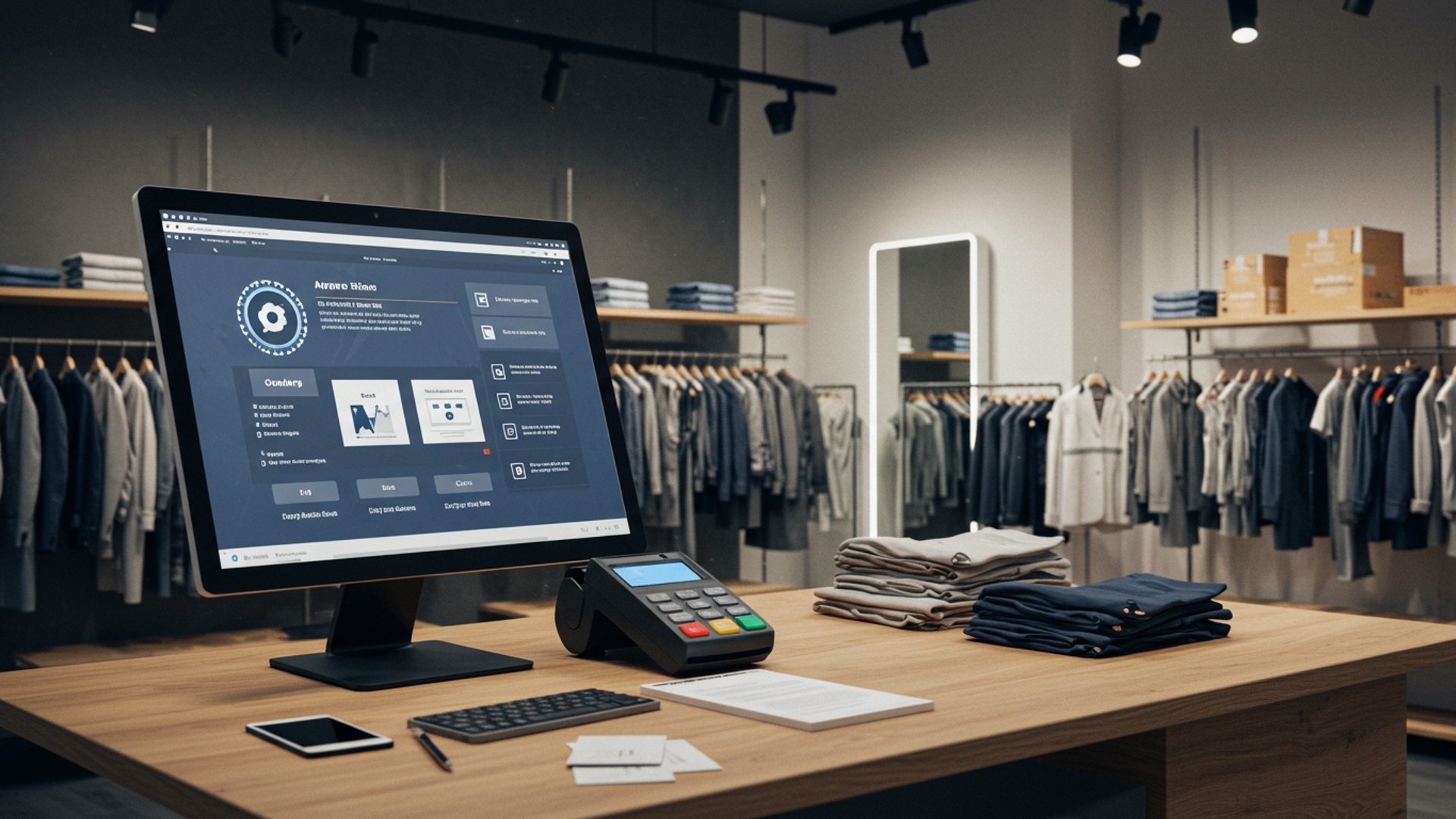
Intuitive UI and Streamlined POS
In the fast-paced world of apparel retail, the checkout process is often the final impression a customer has of your store. A clunky, slow system can turn a positive shopping experience into a frustrating one. This is where an intuitive User Interface (UI) and robust Point of Sale (POS) functionality become non-negotiable for any effective apparel store billing software.
An Intuitive UI refers to the design of the software’s interface, making it easy for staff to interpret and operate with minimal training. Think clean layouts, clearly labeled buttons. logical workflows. For an apparel store, this means quickly locating items, applying discounts, processing returns. handling exchanges without fumbling through complex menus. Staff can focus on customer interaction rather than battling the software, leading to a smoother, faster transaction.
- Point of Sale (POS) functionality
- apparel store billing software
- Fast and Efficient Transaction Processing
- Multiple Payment Options
- Barcode Scanning
- Returns, Exchanges. Refunds
- Discount and Promotion Management
Minimizing wait times, especially during peak hours. ensuring quick customer turnaround.
Accepting cash, credit/debit cards (via integrated payment gateways), mobile payments (e. g. , Apple Pay, Google Pay), gift cards. even buy-now-pay-later services to cater to diverse customer preferences.
Quick and accurate item identification through scanning product barcodes, drastically reducing manual entry errors and speeding up checkout.
Streamlined processes that can easily locate original transactions, manage inventory adjustments. process refunds or store credit seamlessly.
Applying various types of discounts (percentage-based, fixed amount), loyalty points. promotional codes effortlessly at the point of sale.
Consider a scenario: A customer wants to return a pair of jeans purchased last week and exchange them for a different size and color. With a well-designed apparel store billing software, the sales associate can scan the original receipt or the item, quickly find the purchase history, process the return. then scan the new item for the exchange, all within a minute or two. This efficiency not only delights the customer but also frees up staff to assist other shoppers, ultimately boosting store productivity and customer satisfaction.
Comprehensive Inventory Management
For an apparel store, managing inventory is far more complex than for many other retail sectors. You’re not just tracking a single item; you’re tracking variations of that item across sizes, colors, styles. sometimes even different fabric types or seasons. This is why comprehensive inventory management is a cornerstone feature of successful apparel store billing software.
Inventory Management in this context means the system’s ability to track every single product from the moment it enters your store until it’s sold. Key capabilities include:
- Variant Management
- Real-time Stock Updates
- Automated Reordering
- Batch and Lot Tracking
- Inter-store Transfers
Handling different SKUs (Stock Keeping Units) for the same product based on attributes like size (S, M, L, XL), color (red, blue, green). style (slim-fit, regular-fit). Each unique combination should have its own trackable SKU.
As items are sold, returned, or received, the inventory count should update instantly across all sales channels (in-store, online). This prevents overselling (selling an item you don’t have) or missed sales due to inaccurate stock levels.
Setting reorder points for popular items or sizes. When stock falls below a certain threshold, the system can automatically generate purchase orders or alert you to restock, ensuring you never run out of bestsellers.
Useful for tracking specific shipments or collections, especially for quality control, managing seasonal stock, or recall purposes.
If you have multiple locations, the ability to easily transfer stock between stores to fulfill customer demand or balance inventory, minimizing dead stock.
A personal anecdote: I once consulted for a boutique that struggled with customer complaints about items being “out of stock” online, only to find them in the back room. Their old system couldn’t differentiate between sizes effectively, leading to manual checks and errors. Implementing an apparel store billing software with robust variant management solved this, showing accurate stock levels for every size and color online and in-store, dramatically improving customer satisfaction and reducing wasted staff time searching for items.
Defining SKU (Stock Keeping Unit): A unique alphanumeric code assigned to each distinct product or product variant to allow for internal tracking of inventory. For example,
TSHIRT-BLUE-M
would be a SKU for a medium blue t-shirt.
Empowering Customer Relationship Management (CRM)
In the competitive apparel market, customer loyalty is gold. A powerful apparel store billing software doesn’t just process transactions; it helps you build lasting relationships with your customers through integrated Customer Relationship Management (CRM) features.
CRM functionality within your billing software allows you to capture, store. assess customer data to personalize interactions and foster loyalty. Essential CRM features include:
- Customer Profiles
- Loyalty Programs
- Personalized Marketing
- Wishlists and Shopping Preferences
- Returns and Exchange History
Creating detailed profiles for each customer, including their contact insights, comprehensive purchase history, preferred sizes, favorite brands. even special dates like birthdays or anniversaries.
Managing points-based systems, tiered memberships, or exclusive discounts for repeat customers. The software should track points earned, allow redemption. apply benefits automatically at checkout.
Using purchase history and preferences to segment customers and send targeted promotions (e. g. , “You loved our spring collection, check out these new arrivals in your favorite style!” or “Enjoy 15% off on your favorite denim brand!”).
Allowing customers to save items they like for later, providing valuable data on potential future purchases and informing merchandising decisions.
Easily accessible records for a smoother customer service experience, even without a physical receipt, improving customer trust and convenience.
Imagine a customer walks into your store. your sales associate, using the apparel store billing software, can instantly see their past purchases, their preferred denim brand. that it’s their birthday next week. “Welcome back, Sarah! We just got in some new jeans from [Preferred Brand] that I think you’ll love. as a thank you for being a loyal customer, here’s an exclusive birthday discount.” This level of personalized service is only possible with integrated CRM, transforming a simple transaction into a memorable customer experience and fostering long-term loyalty.
Advanced Reporting and Actionable Analytics
Running an apparel store without understanding your sales data is like sailing without a compass. High-quality apparel store billing software provides robust reporting and analytics capabilities, turning raw transaction data into actionable business insights presented through user-friendly dashboards.
Advanced Reporting and Actionable Analytics tools allow you to generate various reports that help you monitor performance, identify trends. make informed decisions, often visualized on intuitive dashboards. Key reports and features include:
- Sales Reports
- Inventory Reports
- Customer Reports
- Employee Performance Reports
- Discount and Promotion Effectiveness
- User-Friendly Dashboards
Detailed daily, weekly, monthly. yearly sales data. Breakdowns by product, category, staff member, time of day. payment method to identify sales patterns and peak hours.
Real-time stock levels, best-selling items, slow-moving items, inventory turnover rate. stock valuation. This helps identify popular products, manage stock levels effectively. flag items that need to be cleared.
Identifying top customers by spending, average transaction value, customer retention rates. demographic insights to refine marketing strategies.
Tracking sales per employee, commission calculations. identifying top performers or areas needing training.
Analyzing which promotions are driving sales and which are less effective, allowing for data-driven adjustments to marketing campaigns.
Presenting key performance indicators (KPIs) through customizable visualizations like charts, graphs. heat maps, allowing for quick, at-a-glance understanding of business health and trends. These dashboards often feature drill-down capabilities for deeper analysis.
An apparel store noticed a dip in sales on Tuesdays. By pulling a sales report from their apparel store billing software broken down by day of the week, they confirmed the trend. They then experimented with a “Tuesday Treats” promotion (e. g. , 15% off accessories) and used the software’s reporting to track its impact. Within a month, Tuesday sales showed a significant improvement, demonstrating the power of data-driven decision-making, all facilitated by clear, accessible analytics.
Key Term: Inventory Turnover Rate – This metric measures how many times inventory is sold or used in a given period. A higher turnover generally indicates strong sales and efficient inventory management, while a low turnover suggests overstocking or weak demand.
Scalability and Cloud-Based Access
As your apparel business grows, your billing software needs to grow with it. Investing in an apparel store billing software that offers scalability and cloud-based access is crucial for long-term success, flexibility. adaptability in a dynamic market.
Scalability refers to the system’s ability to handle an increasing amount of work or its potential to be enlarged to accommodate growth. For an apparel store, this means:
- Handling Higher Transaction Volumes
- Adding New Products and Variants
- Supporting Multiple Users
- Expanding to Multiple Locations
The software should not slow down or crash as your customer base and sales volume increase, ensuring consistent performance during peak seasons.
Easily incorporating thousands of new SKUs as your product catalog expands without encountering system limitations.
Allowing more staff members to access and use the system concurrently from various locations without performance degradation.
Seamlessly integrating new store locations into the existing system, centralizing management (which we’ll cover in the next section).
Cloud-Based Access means the software and its data are hosted on remote servers, accessible via the internet, rather than installed directly on local computers. The benefits are substantial:
- Anywhere, Anytime Access
- Automatic Updates and Maintenance
- Reduced IT Costs
- Enhanced Data Security and Backup
Business owners can monitor sales, check inventory. run reports from anywhere with an internet connection – whether at home, during a trade show, or on vacation. This provides unparalleled operational flexibility.
The software provider handles updates, security patches. server maintenance, freeing up your time and IT resources. You always have the latest features and security.
No need for expensive on-premise servers, dedicated IT staff for maintenance, or complex local network configurations.
Cloud providers typically offer robust security measures, including encryption and automatic data backups across redundant servers, protecting your valuable sales and customer data from local hardware failures or disasters.
A real-world example: A small online apparel boutique that started using a basic spreadsheet for billing quickly realized its limitations as orders surged during a viral marketing campaign. Switching to a cloud-based apparel store billing software allowed them to manage increased sales efficiently, hire more staff who could access the system remotely. confidently plan for opening a physical storefront, knowing their billing system wouldn’t be a bottleneck to their ambitious growth plans.
Multi-Store Management Capabilities
If your vision for your apparel business extends beyond a single location, then multi-store management is an indispensable feature for your apparel store billing software. This capability centralizes operations and provides a unified, real-time view across all your retail outlets, whether physical stores or online channels.
Multi-Store Management allows you to oversee and control inventory, sales, customer data. staff across multiple physical stores (and often, online channels too) from a single, centralized dashboard. Key aspects include:
- Centralized Inventory
- Unified Customer Database
- Consolidated Reporting
- Centralized Product Catalog
- Staff Management
View real-time stock levels for every product across all your stores. This allows for efficient stock allocation, inter-store transfers. fulfilling online orders from the nearest available store, optimizing inventory utilization.
Customers can earn loyalty points, redeem gift cards. have their purchase history recognized at any of your locations, enhancing their overall shopping experience and fostering brand loyalty regardless of where they shop.
Generate sales reports that combine data from all stores, or view performance store-by-store, giving you a holistic and granular view of your business’s health and individual store performance.
Manage product details, pricing. promotions from one place, ensuring consistency across all your retail touchpoints and simplifying product updates.
Track employee performance and manage access permissions for staff across different locations, ensuring appropriate access levels and accountability.
Without multi-store management, each store operates in a silo, leading to disparate data, inventory inaccuracies. inconsistent customer experiences. Imagine a customer buying a gift card at your downtown store and trying to use it at your mall location, only to be told it’s not recognized because the systems aren’t linked. This is a common and frustrating pitfall that a robust apparel store billing software with multi-store capabilities completely eliminates, providing a seamless brand experience for your customers and streamlined operations for your business.
Seamless Integration with Ecosystem Tools
No software operates in a vacuum, especially in the modern retail ecosystem. The ability of your apparel store billing software to seamlessly integrate with other essential business tools is paramount for operational efficiency, data consistency. unlocking advanced functionalities.
Integration Capabilities refer to the software’s design to connect and exchange data with other applications. This creates a unified technological stack, eliminating manual data entry, reducing errors. ensuring all your business systems work in harmony. Key integrations for an apparel store typically include:
- E-commerce Platforms
- Accounting Software
- Payment Gateways
- Marketing Automation Tools
- Shipping and Logistics Providers
Connecting your in-store sales with your online store (e. g. , Shopify, WooCommerce, Magento). This ensures inventory levels are synchronized in real-time, sales data is consolidated. customer profiles are updated across both channels, preventing overselling and providing a consistent customer journey.
Automatically pushing sales data, expenses. other financial transactions to your accounting system (e. g. , QuickBooks, Xero). This saves hours of manual data entry, ensures accurate financial reporting. simplifies tax preparation.
Integration with various payment processors (e. g. , Stripe, Square, PayPal) to securely handle credit card transactions and other digital payments, offering customers diverse and secure payment options.
Connecting with email marketing platforms (e. g. , Mailchimp, Klaviyo) to leverage customer data for targeted campaigns, abandoned cart reminders. personalized product recommendations.
For online orders, integrating with carriers like UPS, FedEx, or local delivery services to streamline fulfillment, generate shipping labels. provide tracking data automatically.
| Integration Type | Benefit for Apparel Store | Actionable Takeaway |
|---|---|---|
| E-commerce Platform | Real-time inventory sync, unified sales and customer data. | Prevents overselling online, ensures consistent customer experience across channels. |
| Accounting Software | Automated financial reporting, reduced manual data entry, improved accuracy. | Saves significant time, simplifies bookkeeping, ensures tax compliance. |
| Payment Gateway | Secure, diverse payment options, faster checkout. | Increases conversion rates, improves customer convenience and trust. |
A client once had separate systems for their physical store and online shop. Inventory updates were a nightmare, often leading to orders for out-of-stock items, resulting in frustrated customers and cancellation fees. Implementing an apparel store billing software that integrated seamlessly with their Shopify store instantly resolved this, providing a single source of truth for all inventory and sales data. This not only improved customer satisfaction but also significantly reduced operational headaches and manual reconciliation efforts.
Robust Security and Data Backup
In an age where data breaches are a constant threat, the security of your sales, inventory. sensitive customer data is paramount. A reliable apparel store billing software must prioritize robust security features and reliable data backup protocols to protect your business and your customers’ trust.
Security encompasses all measures taken to protect your data from unauthorized access, loss, or damage. Key security features for billing software include:
- Encryption
- User Access Controls
- PCI DSS Compliance
- Regular Security Audits
- Two-Factor Authentication (2FA)
Protecting sensitive data (e. g. , credit card numbers, customer personal data) both in transit (when it’s being sent over networks) and at rest (when it’s stored on servers). This is fundamental for data privacy.
Granular permissions that allow you to define precisely what each staff member can see and do within the software. For example, a sales associate might only have access to the POS, while a manager can view reports and manage inventory, preventing unauthorized actions.
For any software handling credit card payments, compliance with the Payment Card Industry Data Security Standard is critical to prevent fraud, protect cardholder data. avoid hefty fines.
The software provider should regularly audit their systems for vulnerabilities, conduct penetration testing. promptly apply patches to address any identified weaknesses, ensuring continuous protection.
An added layer of security requiring a second form of verification (e. g. , a code sent to a phone) in addition to a password, significantly reducing the risk of unauthorized access.
- Data Backup
- apparel store billing software
- Automated Daily Backups
- Redundant Storage
- Easy Data Restoration
Ensuring your data is backed up frequently and automatically, minimizing potential data loss.
Storing backups in multiple, geographically separate locations to protect against localized disasters and ensure high availability.
The ability to quickly and reliably restore your data to a previous point in time if needed, minimizing downtime and business disruption.
It’s not just about protecting your business; it’s about protecting your customers’ trust. A data breach can severely damage your brand’s reputation, lead to significant financial and legal repercussions. erode customer confidence. Choosing an apparel store billing software with enterprise-grade security and robust backup protocols provides essential peace of mind and safeguards your business’s future.
Customization and Operational Flexibility
Every apparel store has its own unique flair, operational nuances. specific product categories. A one-size-fits-all approach rarely works perfectly. Therefore, the best apparel store billing software offers a degree of customization and flexibility to adapt to your specific business needs, rather than forcing you to adapt to its limitations.
- Customization
- Flexibility
- Configurable Product Attributes
- Customizable Receipt Templates
- Tailorable Reporting Dashboards
- Workflow Adjustments
- Role-Based Permissions
- Custom Fields
Beyond basic size and color, being able to add custom attributes like fabric composition, fit type (e. g. , athletic, relaxed, oversized), season collection, designer, or care instructions for better organization, searching. detailed reporting.
Adding your brand logo, special offers, detailed return policies, social media handles, or personalized messages to receipts to reinforce branding and customer engagement.
Allowing you to prioritize and display the metrics most vital to your business at a glance, creating personalized views for different roles (e. g. , owner, store manager, inventory specialist).
The ability to modify certain steps in the checkout process, inventory management, or order fulfillment to perfectly match your existing operational flow, improving efficiency and reducing staff training time.
Fine-tuning user access levels to precisely match the responsibilities of different staff members, ensuring data security and operational control.
Adding bespoke fields to customer profiles, product details, or orders to track details unique to your business, such as customer measurements for tailoring services or specific garment alteration notes.
Consider a boutique specializing in bespoke garments. Their apparel store billing software needs to track not just sizes. also custom measurements, order statuses (e. g. , “consultation,” “fabric ordered,” “tailoring in progress”). perhaps even designer notes. A flexible system allows them to add these custom fields and configure workflows, ensuring their unique, high-touch service model is fully supported, rather than forcing them to adapt to a generic system.
Another example: A store that frequently runs complex “buy one, get one half price” or “spend X, get Y free” promotions needs a system where these can be easily set up, managed. automatically applied without manual overrides at the register. The flexibility to define and apply these specific promotional rules is a significant advantage, ensuring consistency and accuracy across all transactions.
Efficient Returns and Exchanges Management
Returns and exchanges are an inevitable part of the apparel retail business. While they can sometimes be a hassle, an efficient and smooth process can turn a potentially negative experience into an opportunity to reinforce customer loyalty and improve brand perception. Your apparel store billing software must excel in managing these transactions with ease and accuracy.
Efficient Returns and Exchanges Management means the software simplifies the process for both staff and customers, reducing friction, minimizing errors. ensuring compliance with store policies. Key features include:
- Easy Transaction Lookup
- Automated Inventory Adjustment
- Flexible Return Options
- Return Policy Enforcement
- Reporting on Returns
Quickly finding original purchase details using various identifiers such as a receipt number, customer name, date of purchase, or even scanning the item’s barcode. This is crucial for verifying purchases and applying correct return policies.
When an item is returned, the software should automatically update inventory levels in real-time, making the item available for resale if applicable. For exchanges, it should accurately deduct the returned item and add the new one, maintaining precise stock counts.
Supporting various scenarios such as full refunds to the original payment method, issuing store credit, or facilitating exchanges for different sizes, colors, or entirely different items.
The system should be able to enforce your store’s specific return policy (e. g. , 30-day window, items must be unworn with tags, receipt required), guiding staff through the process and ensuring consistency.
Generating detailed reports on return rates by product, reason for return. staff member can provide valuable insights into product quality issues, sizing inconsistencies, or sales practices that might be leading to higher returns.
A common pain point for apparel stores is managing partial returns from multi-item purchases or returns involving discounts. A sophisticated apparel store billing software can correctly prorate discounts and handle the financial adjustments seamlessly, preventing errors and ensuring accurate accounting. For instance, if a customer bought two items with a “buy one, get one 25% off” promotion and returns the full-priced item, the software should automatically adjust the discount applied to the remaining item, ensuring the refund is calculated correctly and fairly.
This feature is not just about convenience; it’s about minimizing financial discrepancies, upholding store policies consistently. significantly enhancing the customer experience, turning a necessary process into a testament to your store’s professionalism and customer-centric approach.
Written by PromotoAI
promotoai generate content that ranks
Conclusion
Selecting the right billing software isn’t merely about processing sales; it’s about architecting your apparel store’s future for sustained success. The ten essential features we’ve explored – from robust inventory management to insightful reporting and seamless POS integration – are the pillars of efficiency and customer satisfaction in today’s dynamic retail landscape. Consider, for instance, how a system instantly updating stock after a sale prevents disappointing customers with out-of-stock items, a common challenge I’ve observed in fashion retail that directly impacts boosting your retail business. My personal tip is to prioritize scalability and cloud-based solutions, ensuring your investment supports growth and omnichannel aspirations, a crucial trend in modern retail. Don’t just pick software; choose a strategic partner that empowers you to assess trends, personalize experiences. ultimately, elevate your brand. Embrace this digital transformation with confidence. you’ll not only streamline operations but also create memorable shopping journeys, setting your apparel business apart.
More Articles
Learn 7 Ways Apparel Store Billing Software Boosts Your Retail Business
Boost Your Clothing Store Sales 7 Ways With POS Barcode Scanners
Master Your Garment Shop Operations with 7 Top POS Systems
Learn 8 Smart Ways POS Software Streamlines Inventory Management
Discover the 7 Best POS Software Solutions in India for Your Business
Written by PromotoAI
promotoai generate content that ranks
FAQs
Why is robust inventory tracking so crucial for an apparel store?
For an apparel store, inventory management goes beyond just counting items. You need to track specific variants like sizes, colors. styles. Good software helps you avoid stockouts of popular items, identifies slow-moving merchandise. ensures you always know what’s available, preventing missed sales and overstocking.
What makes a Point of Sale (POS) system truly effective for a clothing shop?
An effective POS for apparel is fast and intuitive. It should handle quick barcode scanning, process various payment types, easily apply discounts and promotions. simplify returns and exchanges. Speed and ease of use at the checkout are key to a smooth customer experience.
How can billing software help me better grasp my customers?
The right software includes customer relationship management (CRM) features. It allows you to build customer profiles, track purchase history, manage loyalty programs. even send targeted promotions. Understanding what your customers buy helps you personalize offers and build stronger relationships.
Are detailed sales reports really that crucial for a small clothing business?
Absolutely! Detailed reports are your business’s compass. They show you sales trends, your most popular products, peak shopping times. even staff performance. This data is invaluable for making informed decisions on merchandising, staffing. marketing strategies, helping your business grow.
My store frequently deals with returns and exchanges. Can billing software make this less of a headache?
Yes, definitely! Good billing software streamlines the entire returns process. It allows for quick processing of refunds or exchanges, automatically updates inventory. keeps accurate records. This makes a potentially frustrating situation much smoother for both your staff and your customers.
What should I look for to ensure the software is easy for my staff to use?
Look for an intuitive and user-friendly interface. Staff should be able to quickly learn the system with minimal training. Features like clear navigation, easily accessible functions for common tasks (like adding items or applying discounts). a responsive design are vital for efficient daily operations.
Is it crucial for the software to handle different payment methods securely?
Crucially vital! Modern customers expect flexibility in payment. Your software needs to securely integrate with various payment gateways for credit/debit cards, mobile payments. potentially even gift cards. Robust security measures protect sensitive customer data and build trust in your store.

